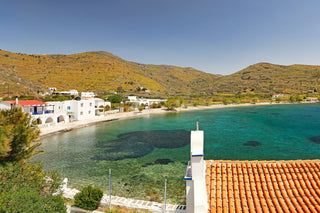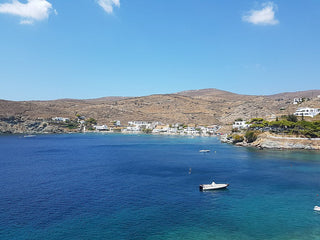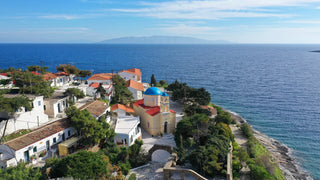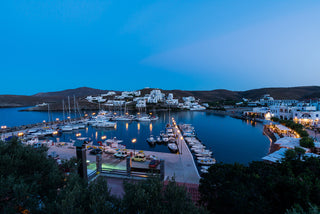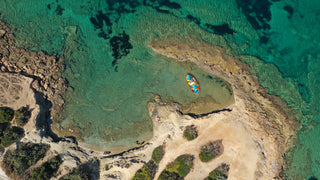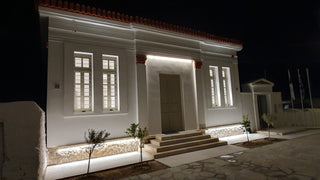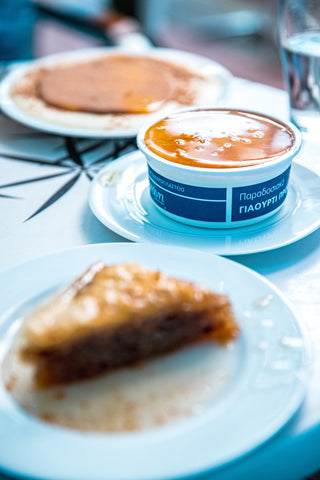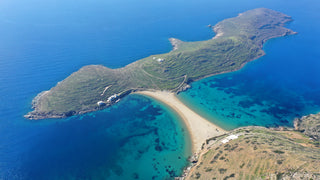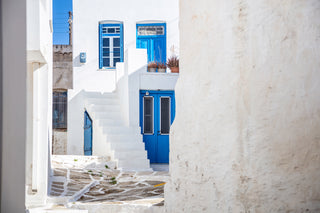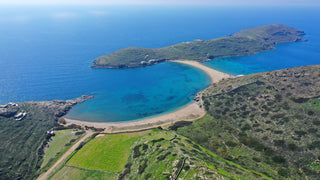Kythnos, an enchanting island tucked away in the Cyclades archipelago, is a testament to Greece's rich history, vibrant culture, and unparalleled beauty. Beyond its stunning beaches and therapeutic thermal springs, Kythnos is also home to picturesque alleys and traditional settlements that tell tales of time gone by. These winding pathways and timeless settlements offer an immersive experience into the heart and soul of the island, revealing its true character and charm.
The island of Kythnos, often referred to as Thermia due to its famous hot springs, boasts two primary settlements: Chora and Driopida, both brimming with authentic Cycladic charm. However, the allure of Kythnos is not limited to these settlements alone. Small villages scattered across the island, each with its unique allure, add to the island's traditional appeal.
Chora, the capital of Kythnos, is a pure representation of Cycladic architecture and lifestyle. It was built in the 17th century and has been inhabited since then. Perched on a hilltop, the town is a labyrinth of narrow, whitewashed alleys, with bougainvillea-clad houses adding splashes of vibrant color. As you wander these charming paths, you'll encounter beautiful churches, quaint squares, and traditional tavernas serving delectable local cuisine. The alleys of Chora are meant to be explored leisurely, letting the town reveal its secrets one turn at a time.
On the north-eastern side of the country, you will see the Wind Park. It is the first wind farm to operate in Europe.
The visitor will encounter Chora or Messaria, the capital of Kythnos, by traveling north on the asphalt road from Mericha to the heart of the island. According to the 2011 census, there were 806 people living there, and it is 8 kilometers from Mericha.
There is a transportation connection for tourists that employs regular buses and taxis that starts at the port of Merichas and goes to all villages around the island.
Chora,(Messaria), is without a doubt the island's most picturesque settlement. It charms and enthralls with its Cycladic character.
A visit to Messaria invites guests to wander its charming cobblestone paths, marvel at the many churches, and take in the sight of whitewashed stone houses featuring tiled roofs and windows painted in classic Cycladic hues. One will be captivated by the vintage mansions, complete with their balconies and lofts, and drawn into the "steadia," the narrow passageways threading through the settlement. The fragrant gardens are sure to enchant, just as the discovery of ancient ruins scattered throughout Chora will offer delightful surprises. Engaging with the friendly locals and gazing into the horizon to behold the deep blue of the Aegean Sea further enriches the experience.
In the Messaria square, the visitor will enjoy a coffee or maybe an ouzo with meze (traditional alcoholic Greek drink, with some finger food).
Driopida, also known as Dryopida, is another enchanting village that captivates visitors with its distinctive charm. Unlike most Cycladic villages characterized by white and blue hues, Driopida breaks the mold with its red-tiled roofs, giving it a unique aesthetic appeal. Its narrow, vaulted passages, known as "stoà", provide shade during the hot summer days and are a trademark of the village. Wandering through these tunnel-like alleys feels like stepping back in time, offering a tangible connection to the island's past.
Dryopida took its name from "Dryopes", the first inhabitants of the island according to tradition.
The village, built between the hills and invisible from the sea, has a long tradition in ceramic art. In Dryopida you can visit the Byzantine museum, with ecclesiastical objects, bronze and gilded, an 18th century epitaph and a wood-carved gilded iconostasis.
You can also visit the folklore museum with traditional Asian costumes, household utensils and furniture and live the ultimate experience in the Katafyki cave. The cave is one of the most important and impressive sights of the island, which uniquely combines the natural with the man-made element. It is located in the center of the island, at the southern end of Dryopida, in the location of Fyres. The cave is an underground space, 190 meters above sea level and is a combination of a natural cave and mine galleries.
The village of Loutra, famous for its thermal springs, is another must-visit. Loutra has a marina full of sailing boats, traditional coffee shops, and tavernas serving fresh seafood. Its labyrinthine alleys lead to old, majestic, neoclassical buildings, remnants of an elegant spa town of the past.
The coastal village of Loutra, is only 5 km from Chora. The picturesque settlement is built around the bays of Loutra, Agia Irini, Shinario and Maroulas. In the place of this settlement, was the medieval capital of Kythnos. In the area of Kefalokastro, you can visit the ruins of the castle of Oria. There you will see ruined houses and churches of the time in a wild nature that will enchant you.
Then there's Merichas, the island's port, offering a different kind of charm with its waterfront tavernas and stunning sunset views. A stroll through the town reveals old windmills and traditional houses, while its bustling marina showcases Kythnos's lively side.
The alleys and traditional towns of Kythnos are a journey through time. They embody the island's history, tradition, and culture, providing an authentic Greek island experience. Each alleyway, every stone, and each traditional house has a story to tell, a memory to share. As you wander through these timeless paths, you not only discover the island of Kythnos, but you also find yourself immersed in a living, breathing narrative that is as captivating as it is real.
Kanala, a village on the eastern side of the island, is another charming destination. Named after the Panagia Kanala monastery, the village's spiritual heart, it's surrounded by pine forests, offering a refreshing contrast to the island's typical arid landscapes. The village itself is a blend of old and new, with traditionally built houses standing alongside more modern vacation homes. Strolling its streets, you're just as likely to find a centuries-old chapel as you are a bustling café serving Greek delicacies.

Further exploration of Kythnos leads you to the coastal village of Flambouria. The village takes its name from the nearby Flambouria beach, with sand and pebbles and crystal-clear waters. The small town provides accommodation, all with sea view and small yards. A unique feature of Kythnos is the stone walls or "xerolithies" that divide the fields. As you hike through the island's countryside, these hand-built walls add an ancient and authentic touch to the landscape, a testament to the islanders' age-old farming traditions.
Kythnos also hosts numerous festivals throughout the year, many of which take place in its traditional towns. These festivals, or "panigiria," are a wonderful opportunity to experience the island's vibrant culture and rich traditions. From religious processions to music and dance performances, these celebrations illuminate the streets of Kythnos' settlements, infusing them with a spirit of joy and camaraderie.
Ultimately, the allure of Kythnos lies not just in its stunning natural beauty, but also in its authentic character, which is best exemplified in its charming alleys and traditional towns. Each street, each square, each building echoes the stories of generations past while embracing the promise of the future. From the whitewashed pathways of Chora to the distinctive vaulted passages of Driopida, the island invites you to lose yourself in its timeless charm.
In conclusion, the alleys and traditional settlements of Kythnos are more than just destinations; they are experiences. They offer a glimpse into a slower, simpler way of life, a connection to the past, and an appreciation for the enduring beauty of tradition. Whether you're meandering through the narrow paths of Chora, exploring the unique passages of Driopida, or enjoying the maritime charm of Merichas, you're experiencing a piece of Kythnos that is both timeless and transformative.
In exploring these traditional settlements, you are not merely a tourist; you become a part of Kythnos's ongoing narrative, a story etched in stone, painted in the vibrant hues of bougainvillea, and narrated through the soft melodies of the Aegean winds. So, come and walk the alleys of Kythnos, and let the island's tale unfold with each step you take.
Photos: Unsplash, Shutterstock



